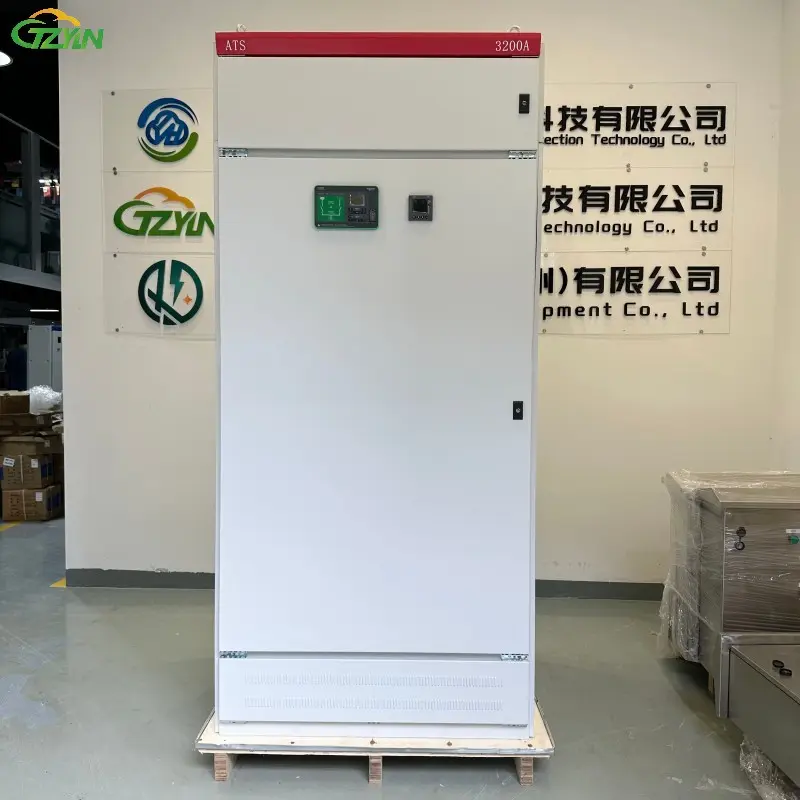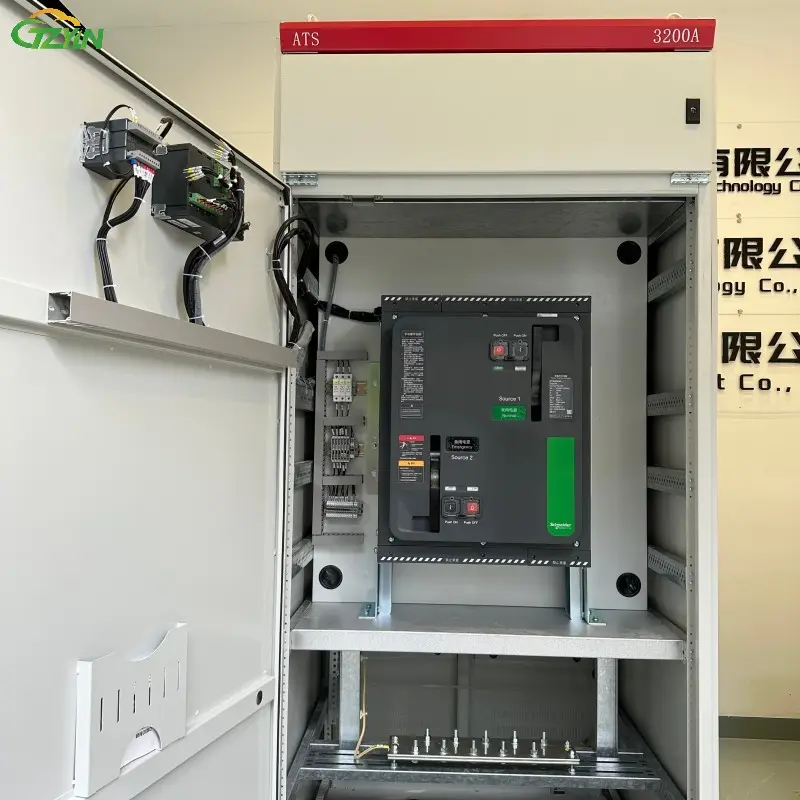ATS Cabinet vs Manual Transfer: Reliability Wins
In power backup systems, the choice between an ATS Cabinet (Automatic Transfer Switch Cabinet) and manual transfer switches directly impacts reliability, especially in critical settings like hospitals, data centers, or industrial facilities. While manual transfer switches have been used for decades, ATS Cabinets offer advanced features that significantly reduce downtime, human error, and operational risks. This guide explores key reliability wins that make ATS Cabinets a superior choice over manual transfer methods, ensuring consistent power supply when it matters most.
Instantaneous Power Transfer During Outages
One of the most critical reliability advantages of an ATS Cabinet is its ability to switch power sources instantly during an outage. When the main power supply fails, every second of downtime risks equipment damage, data loss, or disruption to critical operations. An ATS Cabinet detects the outage automatically—often within milliseconds—and switches to the backup generator or alternative power source without any human intervention.
In contrast, manual transfer requires a person to physically locate the transfer switch, assess the outage, and manually flip the switch to connect to backup power. This process can take minutes or even hours, depending on factors like staff availability, distance to the switch, or poor visibility during emergencies. For example, in a hospital, a delay of even a few minutes could endanger patient care equipment like ventilators or monitors. In a data center, downtime increases the risk of server crashes and data corruption.
The ATS Cabinet’s rapid response eliminates these delays. Its built-in sensors continuously monitor the main power supply’s voltage and frequency. The moment an abnormality is detected (like a drop below safe levels), the ATS Cabinet triggers the backup generator to start and completes the transfer seamlessly. This instantaneous action ensures minimal to no downtime, making it indispensable for applications where power continuity is non-negotiable.
Elimination of Human Error Risks
Manual transfer switches rely entirely on human operators to function correctly, introducing significant risks of error—especially during high-stress emergencies. Human mistakes can range from flipping the wrong switch, misjudging the outage cause, or failing to start the backup generator properly. In some cases, operators may delay the transfer due to confusion, fatigue, or lack of training, exacerbating downtime.
ATS Cabinets eliminate these risks by automating the entire transfer process. They follow pre-programmed protocols that leave no room for human error. For example, the ATS Cabinet will only switch to backup power if it confirms the main supply has failed (not just a temporary fluctuation) and will only switch back to main power once it verifies the main supply has stabilized—preventing premature or unsafe transfers.
Training issues are another concern with manual transfer. Staff turnover, infrequent drills, or lack of familiarity with the system can lead to incorrect operation during outages. ATS Cabinets require minimal human interaction beyond routine maintenance, reducing the need for extensive training. This consistency is crucial in facilities with rotating staff, like manufacturing plants or multi-shift operations, where relying on individual expertise is unreliable.

Continuous Monitoring and Diagnostic Alerts
ATS Cabinets feature built-in monitoring systems that continuously track the performance of both the main power supply and the backup system. This ongoing surveillance identifies potential issues before they escalate into full-blown failures, allowing for proactive maintenance and reducing unexpected downtime.
For example, the ATS Cabinet can detect problems like a weak backup generator battery, low fuel levels, or a faulty sensor in the main power line. It then sends real-time alerts to facility managers via alarms, emails, or connected monitoring systems. This early warning lets maintenance teams address issues during scheduled downtime rather than during an emergency outage.
Manual transfer systems offer no such monitoring. Operators may not discover a problem with the backup generator until an outage occurs—when it’s too late. For instance, a generator with a clogged fuel filter might fail to start during a power loss, leaving the facility without power entirely because the manual transfer switch was flipped but the backup didn’t engage. ATS Cabinets prevent this scenario by ensuring the backup system is always ready to activate.
Additionally, ATS Cabinets log performance data, such as transfer times, generator run hours, and voltage fluctuations. This data helps facilities optimize maintenance schedules, track generator usage, and identify patterns that could indicate underlying power issues—all of which contribute to long-term reliability.
Safe and Seamless Return to Main Power
Reliability isn’t just about switching to backup power—it’s also about safely returning to main power once the outage is resolved. Manual transfer switches pose risks during this “retransfer” phase. Operators may switch back too soon, before the main power supply is fully stable, causing power surges that damage equipment. Or they may forget to switch back entirely, leaving the facility running on expensive generator power unnecessarily.
ATS Cabinets handle retransfer automatically and safely. After the main power supply is restored, the ATS Cabinet monitors it for a pre-set “cooling off” period to ensure stability. It checks for consistent voltage, frequency, and no fluctuations before initiating the transfer back to main power. This prevents premature retransfer and protects equipment from power spikes.
The ATS Cabinet also prioritizes safety during retransfer by using “break-before-make” switching, which ensures the backup power source is disconnected before the main supply is reconnected. This eliminates the risk of “backfeeding,” where power from the generator flows back into the main grid—dangerous for utility workers trying to restore power. Manual transfer switches require operators to remember this step, increasing the risk of accidents.
For facilities with sensitive equipment, like laboratories or medical imaging centers, this safe retransfer process is critical. Power surges during retransfer can damage expensive equipment, leading to costly repairs and extended downtime—issues the ATS Cabinet avoids entirely.
Adaptability to Complex Power Systems
Modern facilities often have complex power needs, with multiple generators, varying load requirements, or the need to prioritize certain equipment during outages. ATS Cabinets are designed to adapt to these complexities, ensuring reliable power distribution even in sophisticated setups.
For example, large facilities like airports or industrial plants may use multiple backup generators. An ATS Cabinet can manage these generators, distributing the load evenly to prevent overloading and ensuring all critical systems receive power. It can also prioritize essential circuits (like emergency lighting or life support systems) and shed non-essential loads (like HVAC in non-critical areas) to conserve generator fuel during extended outages.
Manual transfer switches lack this adaptability. They typically handle a single generator and can’t balance loads or prioritize circuits, increasing the risk of generator overload or failure to power critical equipment. In complex systems, manual transfer may require multiple operators to coordinate, leading to delays and inconsistencies.
ATS Cabinets also integrate with smart building management systems (BMS), allowing remote monitoring and control. Facility managers can check power status, run diagnostics, or even manually override the system (if needed) from a central dashboard—adding an extra layer of reliability and convenience. This integration is impossible with basic manual transfer switches, which remain isolated from broader facility management systems.
FAQ
What is an ATS Cabinet, and how does it differ from a manual transfer switch?
An ATS Cabinet is an automated system that detects power outages and switches to backup power instantly without human intervention. A manual transfer switch requires a person to physically switch between power sources, which is slower and prone to human error.
Can an ATS Cabinet work with any type of backup generator?
Yes, most ATS Cabinets are compatible with diesel, natural gas, or propane generators. They can be programmed to match the generator’s startup time and power output, ensuring seamless integration.
How often does an ATS Cabinet need maintenance?
ATS Cabinets require routine maintenance every 6–12 months, including checking connections, testing sensors, and verifying transfer functionality. This is less frequent than manual switches, which may need more regular inspections due to human handling.
Is an ATS Cabinet more expensive than a manual transfer switch?
Yes, ATS Cabinets have a higher upfront cost, but they save money long-term by reducing downtime, preventing equipment damage, and lowering labor costs associated with manual transfers.
Can an ATS Cabinet fail during an outage?
While rare, ATS Cabinets can fail due to component issues or extreme conditions. However, they include redundant sensors and self-diagnostic features to minimize failure risks, making them far more reliable than manual switches.


